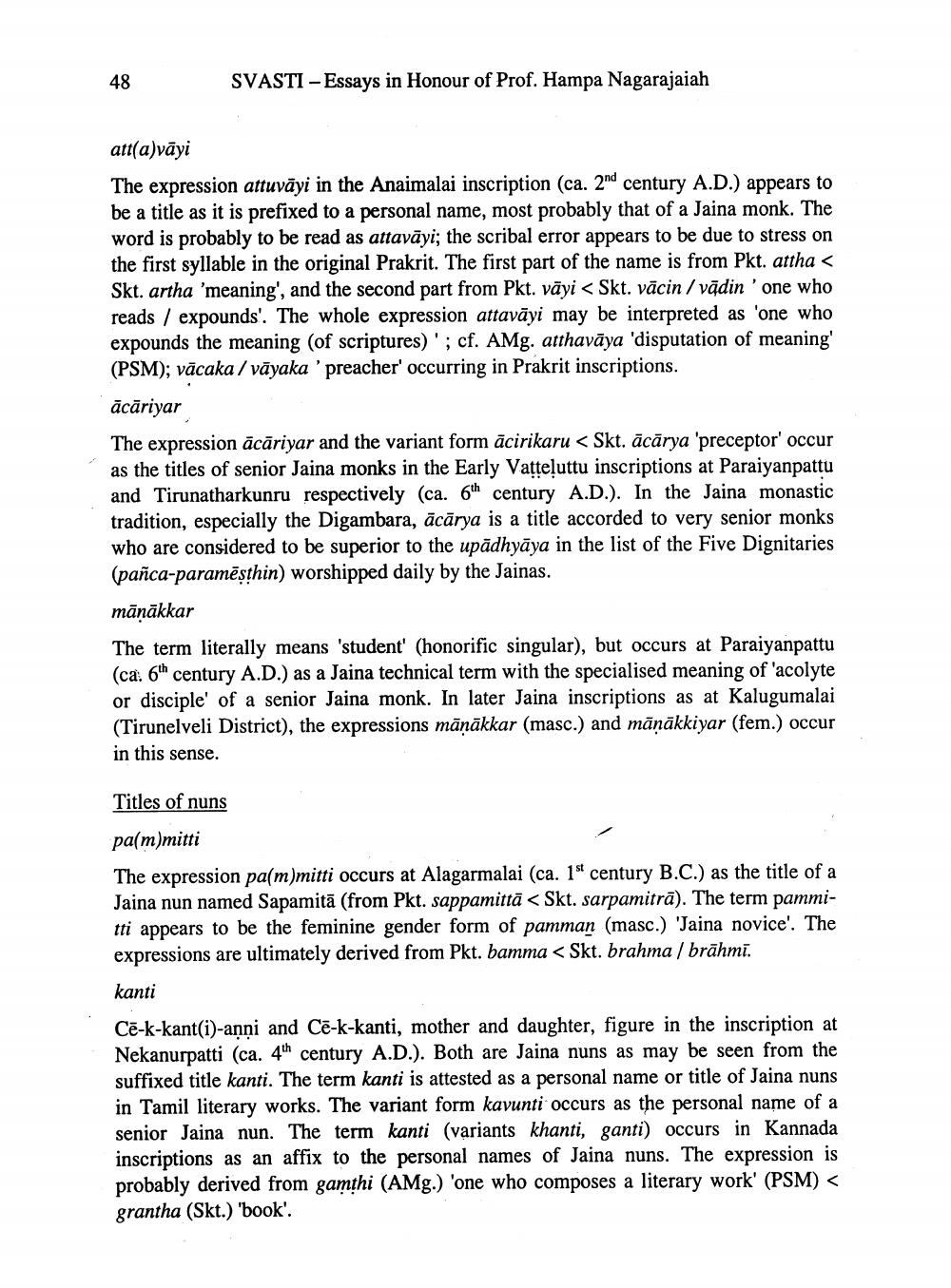________________
48
SVASTI - Essays in Honour of Prof. Hampa Nagarajaiah
att(a)vāyi The expression attuvāyi in the Anaimalai inscription (ca. 2nd century A.D.) appears to be a title as it is prefixed to a personal name, most probably that of a Jaina monk. The word is probably to be read as attavāyi; the scribal error appears to be due to stress on the first syllable in the original Prakrit. The first part of the name is from Pkt. attha < Skt. artha 'meaning', and the second part from Pkt. vāyi < Skt. vācin /vādin'one who reads / expounds'. The whole expression attavāyi may be interpreted as one who expounds the meaning (of scriptures)'; cf. AMg. atthavāya 'disputation of meaning' (PSM); vācaka/vāyaka' preacher' occurring in Prakrit inscriptions.
ācāriyar The expression ācāriyar and the variant form ācirikaru < Skt. ācārya 'preceptor' occur as the titles of senior Jaina monks in the Early Vatteluttu inscriptions at Paraiyanpattu and Tirunatharkunru respectively (ca. 6th century A.D.). In the Jaina monastic tradition, especially the Digambara, ācārya is a title accorded to very senior monks who are considered to be superior to the upādhyāya in the list of the Five Dignitaries (pañca-paramēsthin) worshipped daily by the Jainas. mānākkar The term literally means 'student' (honorific singular), but occurs at Paraiyanpattu (ca. 6th century A.D.) as a Jaina technical term with the specialised meaning of 'acolyte or disciple' of a senior Jaina monk. In later Jaina inscriptions as at Kalugumalai (Tirunelveli District), the expressions māņākkar (masc.) and mānākkiyar (fem.) occur in this sense.
Titles of nuns
pa(m)mitti The expression pa(m)mitti occurs at Alagarmalai (ca. 1st century B.C.) as the title of a Jaina nun named Sapamitā (from Pkt. sappamittā < Skt. sarpamitrā). The term pammitti appears to be the feminine gender form of pamman (masc.) 'Jaina novice'. The expressions are ultimately derived from Pkt. bamma < Skt. brahma / brāhmi.
kanti
Cē-k-kant(i)-anni and Cē-k-kanti, mother and daughter, figure in the inscription at Nekanurpatti (ca. 4th century A.D.). Both are Jaina nuns as may be seen from the suffixed title kanti. The term kanti is attested as a personal name or title of Jaina nuns in Tamil literary works. The variant form kavunti occurs as the personal name of a senior Jaina nun. The term kanti (variants khanti, ganti) occurs in Kannada inscriptions as an affix to the personal names of Jaina nuns. The expression is probably derived from gamthi (AMg.) 'one who composes a literary work' (PSM) < grantha (Skt.) 'book'.




